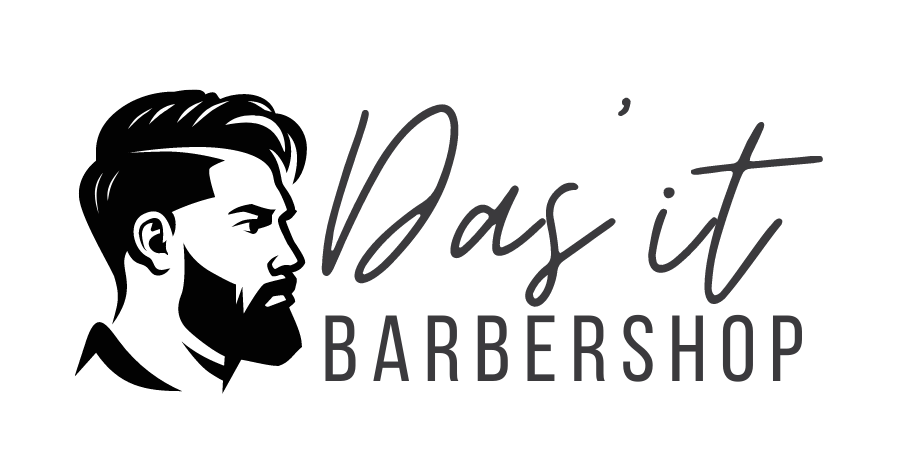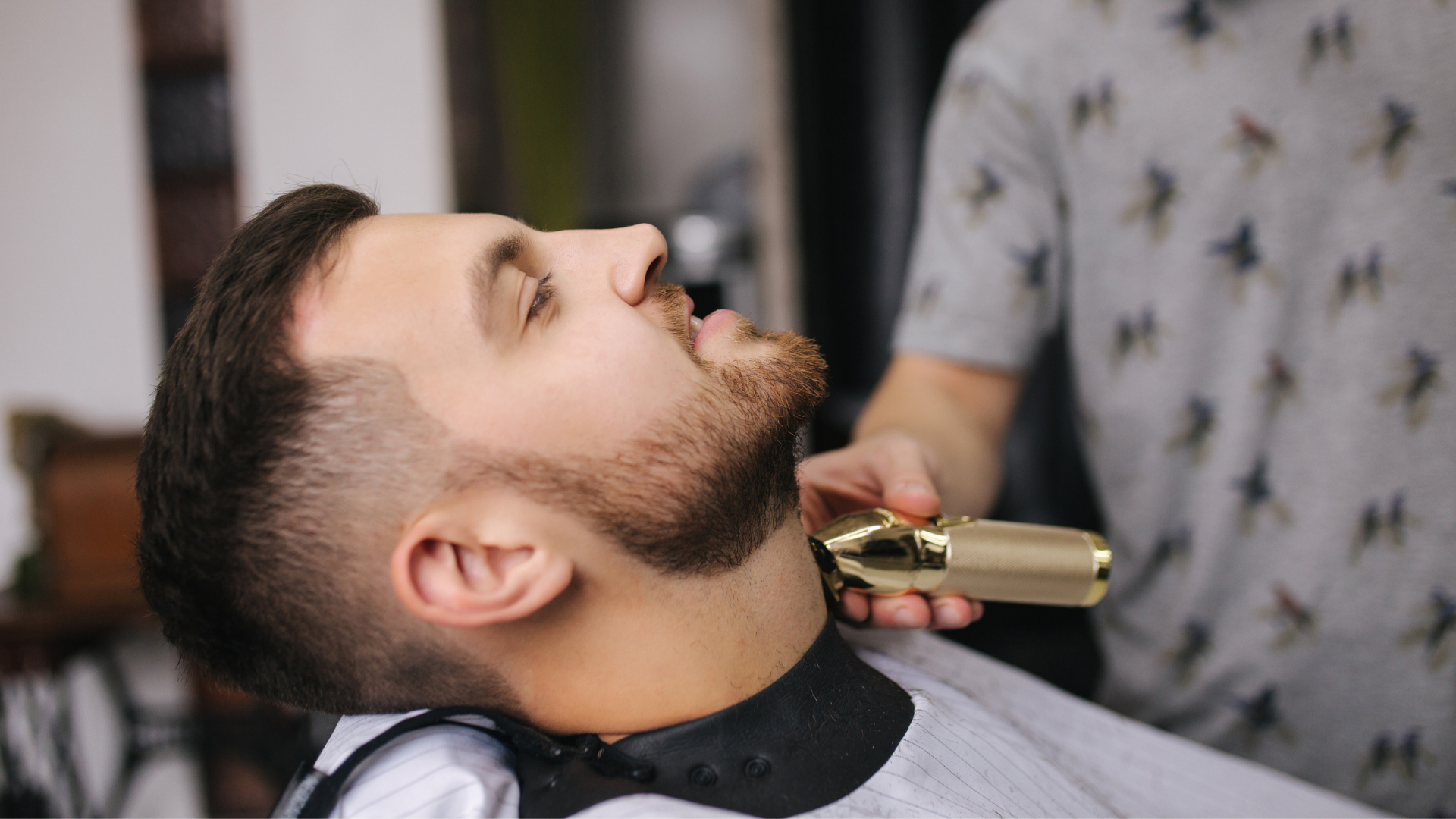A clean neckline can truly transform the appearance of any haircut, giving it a polished and professional finish. While making an appointment at a Barbershop is undoubtedly the best way to achieve the ideal result, there are times when handling a touch-up at home becomes necessary. Whether it’s between appointments or because of a tight schedule, it’s reassuring to know that a sharp and tidy neckline is achievable from the comfort of your own home. You just need to follow the right steps with care, patience, and proper technique. From gathering the appropriate tools to preparing your hair correctly, each step is crucial in giving you a result that closely resembles the expertise of a professional barber.
1. Gather the Right Tools
The first and most essential step to creating a clean neckline at home is ensuring that you have all the necessary tools at hand. Without the right equipment, it becomes much harder to achieve precision, and the results may fall short of expectations. Here’s what you’ll need to assemble before you begin the process:
- A high-quality trimmer with adjustable settings for accurate trimming. This is your primary tool for defining the line and removing excess hair evenly.
- A handheld mirror for checking the back of your neck. This is critical for visibility and will help you align the neckline properly.
- A fine-tooth comb to brush the hair and position it evenly, ensuring clear visibility of the hairline.
- Sharp scissors, preferably barber-grade, to trim stray hairs or for minor adjustments where the trimmer may not reach effectively.
Opting for quality tools is an investment worth making. A good trimmer can closely mimic the precise cuts provided by a Barber in New York, ensuring a sharp neckline with minimal room for error.
2. Start with Clean, Dry Hair
Before even thinking about picking up your tools, it’s important to start by washing and drying your hair. This step preps your hair for trimming and helps achieve a cleaner, more controlled result. Hair that hasn’t been washed might be oily, sweaty, or weighed down by product buildup, making both cutting and styling more challenging.
- Wash thoroughly with shampoo to remove dirt, oils, and leftover product.
- Dry your hair completely with a towel or blow dryer to ensure the hair is easy to manage. Wet hair tends to lay flat and can obscure the natural neckline, leading to errors in trimming.
Starting with clean, dry hair not only makes the trimming easier but also ensures that the cut looks smoother and more defined. Well-prepared hair allows the trimmer or scissors to glide effortlessly through, producing sharp lines that align with those of a professionally done haircut. This advantage is especially key when aiming for a sharp, polished neckline at home.
3. Use a Handheld Mirror for Better Visibility
Achieving a clean and precise neckline when trimming your hair at home can be tricky without the proper tools and techniques. One of the most effective methods to ensure accuracy is by using a handheld mirror in combination with a larger mirror. Position the handheld mirror behind your head while standing or sitting in front of the larger mirror. This setup creates a reflective vantage point that allows you to view the back of your neck clearly. By angling the handheld mirror appropriately, you can check your progress and make adjustments as needed.
This dual-mirror technique is widely used in professional settings, such as barbershops in cities like New York, where precision is a top priority. Barbers rely on these tools to carefully examine the details of a client’s haircut from multiple angles, ensuring a polished, professional result. Adopting this practice at home allows you to replicate that same level of meticulousness. Patience is key when working with mirrors; take your time to get familiar with how the reflections work. Hold the handheld mirror steady and reposition it as needed to get a clear view of different areas. With practice, this method becomes second nature and helps to prevent uneven trims or accidental mistakes.
4. Define the Neckline Shape
Defining the neckline shape is an essential step in creating a polished haircut that complements your personal style. The first decision to make is choosing the type of neckline that best suits your preferences and overall look. There are three commonly used neckline shapes: straight, rounded, and tapered. Each offers a distinct visual effect, and selecting the right one can enhance your hairstyle and facial structure.
- Straight Neckline: This style creates a horizontal, angular finish that works well for individuals seeking a structured and clean-cut appearance. It is an ideal choice for haircuts with sharp edges and a modern aesthetic.
- Rounded Neckline: This design softens the look by curving the bottom edge, giving a more natural and relaxed vibe. It blends seamlessly into the natural shape of the neck and is often recommended for casual, low-maintenance styles.
- Tapered Neckline: This option gradually fades the hairline into the skin, providing a sleek and versatile look that is highly popular. It is perfect for those who prefer a more tailored and professional appearance.
When choosing your neckline shape, use your natural hairline as a guide. Begin by carefully marking the area where the neckline should end. This can be done using a comb, trimmer, or even small clips to section off the area. Paying close attention to the hair’s natural growth pattern ensures a harmonious and balanced look. If you are uncertain about which style suits you best, consider experimenting with minor adjustments or consulting with a professional barber during your next visit to get recommendations tailored to your facial structure and hair type.
Refining the neckline shape takes precision and a steady hand. Work slowly, making small cuts or trims and assessing your progress often using the mirror setup. This deliberate process minimizes errors and ensures that the final result aligns with your desired style.
5. Trim Carefully with a Trimmer
Trimming with precision is one of the most crucial aspects of achieving a stylish and professional finish, much like the level of detail provided by a skilled barber in New York. To begin, ensure that your trimmer is clean and sharp, as a dull blade can create uneven edges and may irritate your skin. Start the trimming process from the center of the neckline or beard, depending on the area you are focusing on. This technique provides a clear anchor point, allowing you to move outward symmetrically and systematically. By starting in the center and working outward, you reduce the likelihood of creating uneven cuts or accidental gaps.
It is important to keep your trimmer steady while making these strokes. Maintaining a consistent hand and even pressure ensures that the lines are clean and sharp, contributing to a professional appearance. When moving the trimmer, use small, controlled motions rather than long, sweeping strokes. You may choose to guide the trimmer along the natural contours of your face or neck for a seamless finish. Regularly wipe your trimmer clean during the process to remove any hair buildup that might obstruct the blades, ensuring a smoother and more accurate trim.
Additionally, proper lighting and a good mirror setup are indispensable for effective trimming. A well-lit area helps you distinguish even the smallest details, while a high-quality mirror offers better visibility from multiple angles. For areas that are difficult to see, consider using a handheld or magnifying mirror to achieve greater accuracy. If needed, take breaks to assess your progress and avoid over-trimming, as this often leads to mistakes that are challenging to rectify.
6. Check for Symmetry
Achieving symmetry is the hallmark of a polished and refined look. After you have completed the trimming process, take a step back and examine your neckline or beard in the mirror. This broader perspective allows you to assess the overall appearance and identify any inconsistencies between the left and right sides. Understanding that symmetry may vary slightly depending on facial structure, focus on creating a look that is balanced and proportional rather than aiming for absolute perfection.
To ensure symmetry, use reference points on your face, such as your jawline, cheekbones, or the corners of your mouth. These natural guides can help you identify whether any adjustments are needed. If you notice any unevenness, return to the problem area with the trimmer and make small, incremental changes. Avoid making drastic alterations, as these can disrupt the overall balance and may lead to over-trimming.
Using a multi-mirror setup or asking for assistance from someone close to you can provide greater accuracy in evaluating symmetry. Pay special attention to the edges and curves, ensuring they blend seamlessly into the rest of the trim. Once satisfied, run a comb or brush through your hair or beard to catch any stray hairs that might have been missed during trimming. Finally, lightly moisturize the freshly trimmed area to soothe the skin and enhance your overall polished look.
By following these detailed steps, you can achieve a clean and symmetrical finish, akin to the precision provided by a professional barber.
7. Clean Up Stray Hairs with Scissors
Once you’ve completed your primary trimming, take a moment to thoroughly inspect your hair or beard in good lighting. Pay extra attention to areas where your trimmer might have missed a few stray hairs, especially around tricky spots like the edges of your neckline, sideburns, or along the jawline. For these touch-ups, a pair of small, high-quality grooming scissors is incredibly useful. These scissors allow for precision cutting, ensuring you can remove even the smallest, hard-to-reach stray hairs without over-cutting or disrupting your desired shape.
Start by identifying any stray hairs that appear out of place. Using a comb, gently lift sections of your hair or beard and trim away any uneven strands sticking out. Move methodically, focusing on small sections at a time to avoid accidental gaps or over-trimming. Work slowly and handle the scissors with a steady hand, maintaining control over each snip. For added accuracy, keep a handheld mirror nearby, allowing you to monitor your progress from different angles as you work.
Cutting with scissors also prevents over-reliance on electric trimmers, especially in delicate zones where precision is paramount. For those trimming their own hair at home, this step is essential for achieving a polished, professional-level finish that rivals the quality of a barbershop cut. Remember, patience is vital during this process, as small adjustments make all the difference between a seamless trim and an uneven result. Scissor maintenance also matters—always ensure your scissors are sharp and clean before use to ensure a smoother cutting experience.
8. Moisturize the Skin to Prevent Irritation
After trimming, your skin may feel slightly sensitive or dry, particularly in areas where the trimmer or scissors closely met your skin. To alleviate this and keep your skin healthy, it’s important to apply a light, nourishing moisturizer as part of your post-trim routine. Many professional barbers, such as those at renowned barbershops in New York, emphasize this step for maintaining soft, irritation-free skin.
Select a moisturizer that suits your skin type. A fragrance-free formula is ideal if you have sensitive skin, while a product containing soothing ingredients like aloe vera, chamomile, or vitamin E can help calm irritation and redness. Hydrating lotions or aftershave balms designed specifically for post-grooming care work exceptionally well and are readily available.
To apply, dispense a small amount of moisturizer into your hands and gently rub it between your palms to warm it up. Massage it into the freshly trimmed areas using light, circular motions, ensuring even coverage. Focus especially on the neck, jawline, and cheeks, where the skin is often more exposed and prone to irritation. Moisturizing not only soothes and hydrates but also forms a protective barrier to lock in moisture and shield your skin from environmental factors.
By incorporating this step into your grooming routine, you ensure your skin remains smooth, supple, and free from post-trim discomfort. This simple yet effective practice adds a final touch to your grooming process, leaving you with a refreshed, confident look every time.
9. Maintain the Neckline Between Cuts
Keeping your neckline well-maintained between haircuts is essential for preserving a polished, sharp appearance. The neckline often dictates how clean and professional your overall haircut looks, and without regular upkeep, it can quickly become untidy. Scheduling a trim every two to three weeks is ideal to prevent stray hairs from growing out and disrupting the clean lines of your haircut. This timeframe strikes a balance, allowing you to retain a sharp look without feeling the need for constant maintenance.
To maintain the neckline effectively, you’ll need the right tools. A pair of quality clippers or a trimmer with adjustable guard settings is crucial for achieving precise results. A handheld mirror is also important, allowing you to check the back of your neck and ensure symmetry. If possible, having a second mirror to reflect a clear view of the neckline can make this process significantly easier. Furthermore, tools like a neckline guide or barber’s pencil can help define the line clearly before trimming, reducing the risk of making mistakes. Patience and attention to detail are key during this process to avoid cutting unevenly or too far into the hair, which could offset the balance of your cut.
Before trimming, start with clean, dry skin and hair. Wet hair might obscure your natural hairline, making it harder to determine where to trim. Begin by outlining the natural neckline or using your previous haircut as a guide. If you’re unsure where the neckline should fall, a good rule of thumb is to keep it natural while avoiding areas where it begins to taper into the upper back or shoulders. When trimming, use light, steady movements to trace along the neckline, removing only small amounts of hair at a time to fine-tune the shape. Gradually step back after each pass to assess the progress and ensure both sides remain even.
Creating and following a regular schedule for trimming your neckline saves time and money by reducing the need for frequent salon visits. It also allows you to take control of your grooming routine. However, if you’re new to maintaining your neckline at home, don’t hesitate to consult a barber or stylist for advice during your next visit. They can provide helpful tips or even demonstrate the proper technique for you to replicate later.
10. Practice Makes Perfect
When it comes to grooming and maintaining your neckline, practice is the key to perfection. The more you familiarize yourself with trimming techniques and mastering your tools, the better the results will be with each attempt. At first, trimming your neckline may feel challenging or intimidating, especially if you’re worried about uneven lines or cutting too much. However, like any skill, regular practice helps build confidence and refine your technique over time.
Begin by setting aside dedicated time for trimming, choosing a moment when you’re not rushed or distracted. Approach the process as a meticulous step in your overall grooming regimen rather than an afterthought. With each session, take note of what works well and what could improve. For example, you might find that angling the trimmer slightly provides a cleaner cut or adjusting the mirror placement improves visibility. Small adjustments can make a significant difference as you continue to gain experience.
Don’t forget that mistakes are part of the learning process. If an error occurs—such as trimming the line unevenly—stay calm and remember that hair will grow back, giving you another chance to perfect your technique. To avoid discouragement, start conservatively by trimming smaller sections of hair instead of making drastic cuts. Over time, you’ll develop a steady hand and an eye for symmetry, allowing you to achieve results that are comparable to a professional barber. Additionally, watching online tutorials or seeking guidance from grooming experts can expedite your learning curve by exposing you to tips and best practices.
With patience and consistency, creating a well-defined neckline at home will become second nature. This skill not only enhances your personal grooming but also instills a sense of achievement in taking control of your appearance. As you become more comfortable with trimming, you’ll notice that the process takes less time and delivers increasingly polished outcomes.
Conclusion
A well-groomed neckline is a subtle yet impactful detail that elevates any haircut, creating a clean and polished look that speaks volumes about your personal style and attention to grooming. Whether you opt to trim your neckline at home or leave it to a professional barber, following these steps ensures consistent, sharp results every time. By maintaining the neckline between cuts and practicing regularly, you can achieve a level of precision and confidence that enhances your overall appearance. Developing this skill is an investment in yourself, providing long-lasting benefits and allowing you to always put your best self forward.


